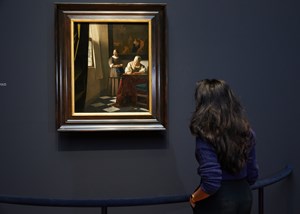
Despite having carefully limited numbers in order to give visitors the best experience possible, the Rijksmuseum’s Vermeer exhibition finished as the most successful exhibition in its history with 650,000 visitors from 113 nations, over 16 weeks from 10 February to 4 June 2023
From 7 June to 10 October, 6 paintings by Vermeer will remain on display in the Gallery of Honour of the Rijksmuseum. The Girl in the Red Hat (National Gallery of Art, Washington) and Young Woman at the Virginal (The Leiden Collection, New York) are temporarily shown together with the four works by Vermeer from the collection of the Rijksmuseum.

The exhibition led to new art historical and material technical research, both within and outside the Rijksmuseum. This has yielded more insights into his working process, his knowledge of optical tools, the context in which his art was created, and his life in Delft. The main findings are:

ArtDependence Magazine is an international magazine covering all spheres of contemporary art, as well as modern and classical art.
ArtDependence features the latest art news, highlighting interviews with today’s most influential artists, galleries, curators, collectors, fair directors and individuals at the axis of the arts.
The magazine also covers series of articles and reviews on critical art events, new publications and other foremost happenings in the art world.
If you would like to submit events or editorial content to ArtDependence Magazine, please feel free to reach the magazine via the contact page.